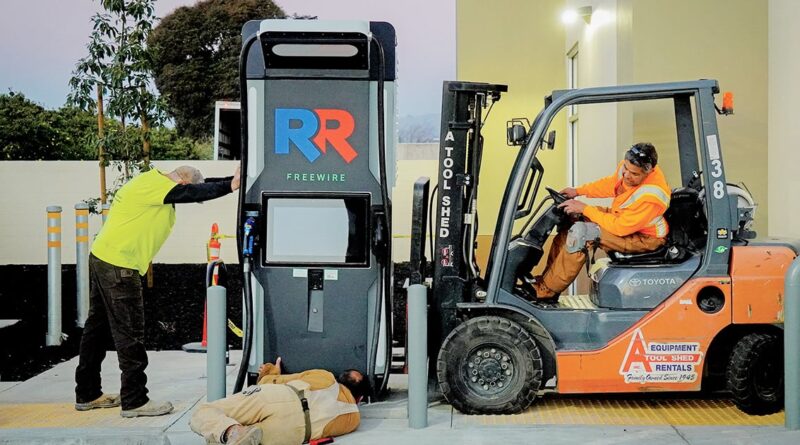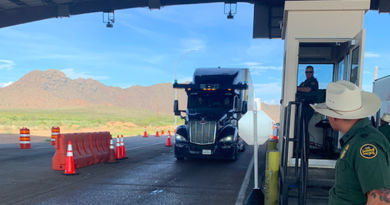EV charger data helps decide locations
As the Biden administration, automakers, local governments and others pledge to install hundreds of thousands of electric vehicle chargers across the U.S., identifying the best locations is critical to expanding EV adoption and charging access.
“In the past, deciding where to place charging was kind of just throwing darts at the wall,” said Arcady Sosinov, CEO of FreeWire Technologies, which provides a tool that helps customers choose charging station locations.
Adding chargers requires more than plopping the equipment down in a public garage. Installing the necessary infrastructure is costly and complicated. Most companies consider numerous factors when selecting sites.
Charging networks, research firms and automakers are using data, such as typical EV driver routes, potential EV sales demand, traffic density and available electricity, to fill charging gaps as sales climb.
Battery-electric vehicles made up 5.6 percent of U.S. light-vehicle registrations last year, according to Experian, up from 3.1 percent in 2021.
Wejo, which relies on connected-vehicle data, works with four automaker partners to help companies and cities determine the best locations for chargers. The data tells Wejo where EV owners drive. Understanding travel patterns is key, said Carl Novelli, assistant vice president of public sector sales for Wejo.
“One of the biggest challenges that everybody’s got … is, where do we put the charging infrastructure?” said Novelli. “I think everyone sort of looked at Tesla and said, ‘OK, you’ve set the benchmark of where to go initially. Where’s next? What does that look like?’ ”
The company is working with civil engineering firms, universities, metropolitan planning organizations, cities and state departments of transportation to apply the intel. Wejo examines the current charging infrastructure at a given site, the number of EVs coming to the lot, whether they are charging and more. This data informs decisions on future locations.
Mobilyze.ai, acquired by FreeWire Technologies in December, uses artificial intelligence to help site hosts choose charging station locations to maximize their return on investment.
The tool provides a 10-year cash flow estimate for charger deployment based on addresses. It suggests addresses by examining vehicle arrival patterns, local EV registration data and more.
FreeWire’s sales team contacts the tenant at the address, which is often a shopping center, and proposes charger installations, said Sosinov.
The tool determines “how many chargers to deploy and when. And they’ll say, ‘Right now, your best bet is to put two chargers on the site. In 18 months, you want to deploy a third one because we expect utilization to ramp up.’ ”
Major EV charging networks ChargePoint and Electrify America use internal data to advise site hosts on locations. They analyze population and utilization rate forecasts and local electrical rates and grants or incentives, the companies told Automotive News.
Electrify America considers EV adoption now and how it will evolve in the coming years. The charging network tracks various data points to determine where energy storage options or real estate expansions will be necessary to meet charging demand, said Jigar Shah, head of energy services for the company.
Having the right retail partner is crucial, Shah said. Electrify America works with big-box retailers such as Target and Walmart.
“We make sure that we choose retail locations where it’s safe, where there’s lighting, where there’s access to customer amenities such as restrooms,” he said.
The retailers should also have extended operating hours to offer amenities for drivers who want to charge late in the day or early in the morning, he said.
General Motors and EVgo have partnered to install 3,250 fast chargers across U.S. metro markets through 2025. They are pinpointing the best charging sites based on high EV adoption, but they are also targeting locations where EVs are scarce, said Aaron Wolff, associate director of GM’s Ultium Charging Network.
The companies aim to expand charging access in areas before EVs gain popularity, rather than only installing chargers where EV owners currently live and travel. Many of those they have installed are the first fast chargers in a given area, he said.
Through the partnership so far, the companies have installed hundreds of chargers in 20 states and 50 cities.
“We are building in the middle of the country in places where a lot of metropolitan areas have not seen high-power DC fast chargers,” he said. “We wanted to be able to see demand and build in some of the places where maybe the economics wouldn’t necessarily make that decision pencil on its own.”
Source : Autonews.com




